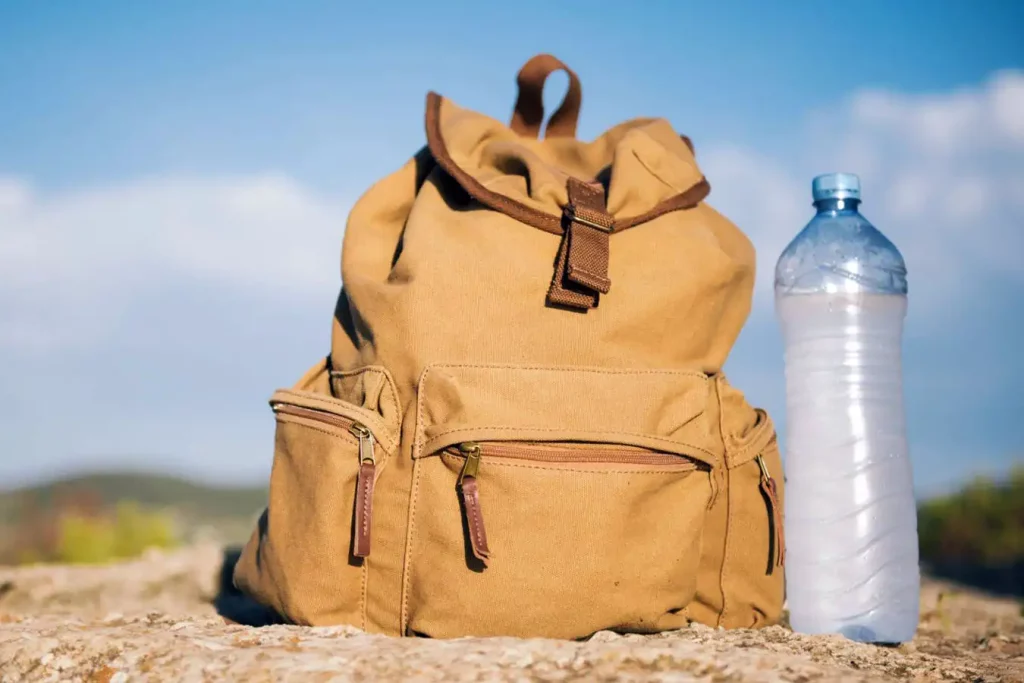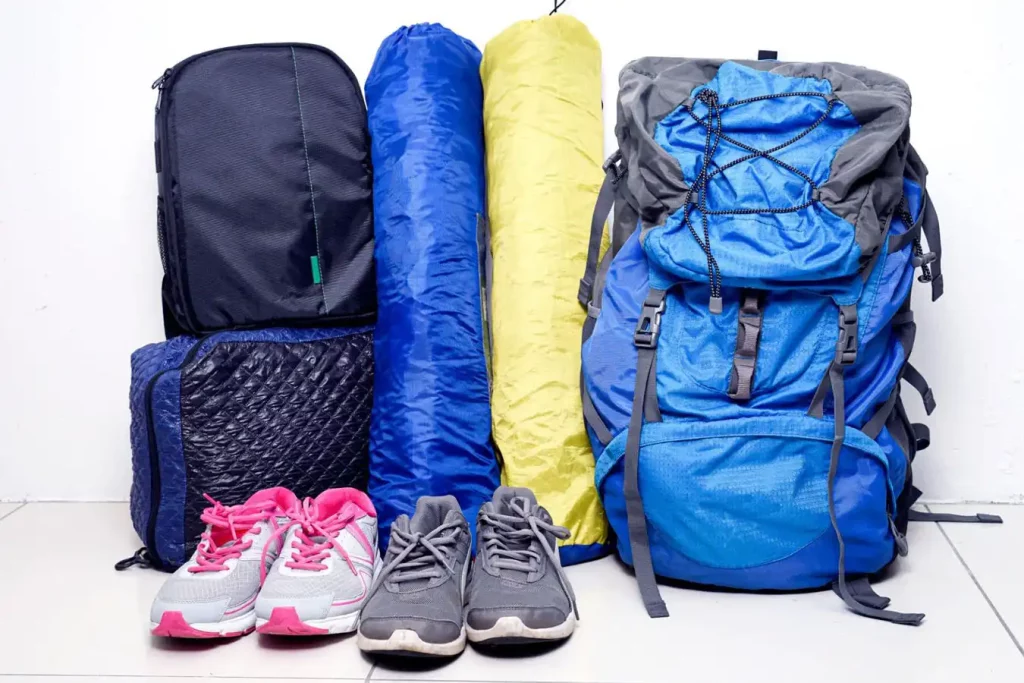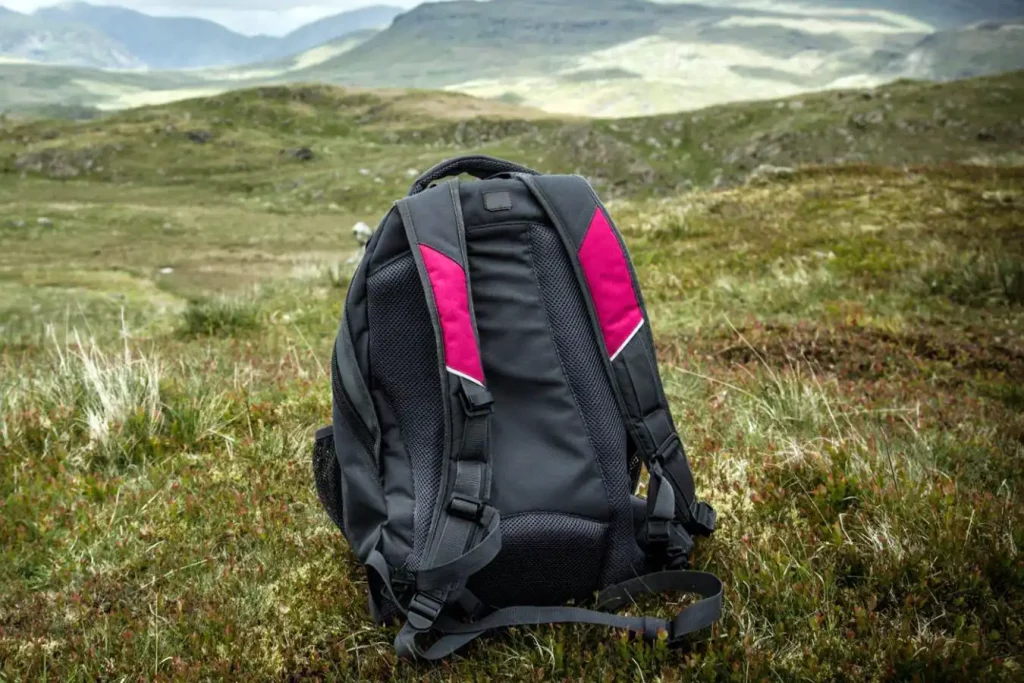What size is a standard backpack? Ever found yourself scratching your head at this?
Backpacks are like shoes; size matters, especially when it’s about comfort.
Too big and you’re hauling extra weight; too small, and well, where’s that water bottle going?
Dive in with me, and we’ll explore this sizing conundrum together.
By the end, you’ll be sizing up backpacks like a pro!
Understanding Backpack Sizes
Backpacks come in all shapes and sizes, designed to fit different bodies and carry different loads. And when we talk about backpack sizes, it’s about more than just how big or small the backpack looks. It’s about volume and dimension.
How Backpack Size is Measured
Generally, the size of a backpack is measured in two main ways: dimensions and volume. Dimensions (usually given in inches or centimeters) will tell you the height, width, and depth of the bag. These measurements can be helpful to know if you’re trying to fit your bag into a specific space, like the overhead compartment on an airplane or under your school desk.
But dimensions alone can be misleading when it comes to understanding the capacity of a backpack. For instance, a slim, tall backpack and a shorter, wider one could have the same dimensions but vastly different capacities. This is where the concept of volume comes in.
The Concept of Liters in Backpack Size
Backpack volume is typically measured in liters (L), which tells you how much the backpack can hold. For instance, a 25L backpack can theoretically hold 25 liters of material. This is a more useful measurement if you’re trying to figure out how much stuff you can pack into your backpack.
However, the same volume can be distributed differently depending on the backpack’s design. A long, slim 25L backpack will have a different internal organization than a shorter, wider 25L backpack. This is why it’s always a good idea to actually test pack a backpack or check its internal compartments before purchasing.
So, what’s considered a standard size for a backpack? In general, a daypack is usually between 20 and 30 liters. These are perfect for daily use like going to work, school, or a day trip. Anything bigger than this, and you’re venturing into the realm of backpacking packs or expedition packs, which can go up to 70 liters or more.
What is a Standard Backpack Size?
Backpack sizes can vary greatly depending on the manufacturer and the intended use of the bag. However, when we talk about a “standard” backpack, we’re generally referring to those designed for daily use, such as going to work, school, or for a day out.

Description of a Standard Size Backpack
A standard size backpack typically has a volume of between 20 to 30 liters. These bags usually measure around 17-19 inches tall, 12-14 inches wide, and 6-8 inches deep. However, these measurements can vary depending on the specific design and manufacturer.
Common Uses for Standard Size Backpacks
These medium-sized bags are versatile and widely used for various activities. They’re perfect for commuting, as they can typically fit a laptop, a book or two, and your lunch. They’re also great for school as they can fit textbooks, notebooks, and other school supplies. And if you’re out exploring the city or heading out on a day hike, a standard size backpack is often just the right size to carry your essentials without being too bulky or heavy.
Comparison of Various Backpack Sizes
Just as Goldilocks had to find the bed that was just right, it’s essential to find the backpack size that fits your needs best. Here’s a quick comparison to help you understand the difference between small, standard, and large backpacks.
Small vs. Standard vs. Large Backpacks
Small backpacks, often around 10 to 15 liters, are perfect for light travel and simple tasks. They’re the go-to choice for a quick run to the coffee shop or when you need to carry just a few essentials.
Standard backpacks, as mentioned above, are your all-rounders. They offer a balance between size and capacity, making them suitable for a wide range of activities.
Large backpacks, anything above 35 liters, are designed for serious hauling. They’re usually used for overnight trips, backpacking, or situations where you need to carry a lot of gear or supplies.
The Right Backpack Size for Different Activities
Let’s break it down into a handy table to better visualize which size backpack fits best for each activity:
| Activity | Ideal Backpack Size |
|---|---|
| Quick errands, Light travel | Small: 10-15L |
| Daily commuting, Day hikes, School | Standard: 20-30L |
| Overnight trips, Backpacking | Large: 35L and up |
In short, a standard backpack typically has a capacity of around 20 to 30 liters, making it suitable for daily use and short trips.
Factors Influencing Backpack Size Choice
Choosing the right backpack size is a mix of personal preference and practical needs. Here are a few factors to consider:
Body Size and Comfort
The right backpack should not only fit all your gear, but it should also fit you! The bag’s length should match the length of your torso, and its width should fit comfortably on your shoulders. A backpack that is too large or too small can lead to discomfort or even back pain over time.
Purpose or Use of the Backpack
What are you using the backpack for? Is it for school, work, hiking, or travel? Different activities require different amounts of gear, which will directly influence the size of the backpack you need.

Essential Gear and Equipment
Lastly, think about what you usually carry. If you’re a tech junkie who always carries a laptop, tablet, and all their respective chargers, you’ll need a larger bag with good organizational features. If you’re a minimalist who just carries a wallet, keys, and phone, a smaller bag might be enough.
Tips for Choosing the Right Backpack Size
After understanding the backpack sizes, you might still be scratching your head, wondering how to choose the right size. Here are some helpful tips to guide your decision-making process.
Assessing Your Needs
Before you start shopping for a backpack, take a moment to really think about what you need. How will you be using this backpack most of the time? What kind of items will you be carrying? Do you need special compartments for a laptop or water bottle? The answers to these questions will help you figure out what size and style of backpack will best meet your needs.
Trying on Different Backpack Sizes
Just like trying on clothes, trying on different backpack sizes is crucial. Don’t hesitate to visit a store and try on various sizes and styles. Remember to pay attention to how it fits on your back and shoulders, how easy it is to access the compartments, and whether it has all the features you need.
If you’re shopping online, look at the dimensions and volume of the backpack, and try to compare it to something you already have at home. Many online retailers also have good return policies if the backpack doesn’t fit as expected.
FAQs about What Size is a Standard Backpack
What is the average size backpack?
What size is a standard school backpack?
What is a good size for an everyday backpack?
What is a personal sized backpack?
Final Words about Size of A Standard Backpack
Choosing a backpack might seem trivial, but a well-chosen bag can significantly enhance your comfort and convenience in daily life or during your adventures. A standard backpack, typically ranging from 20 to 30 liters, is a versatile choice for many, but remember that “standard” doesn’t necessarily mean “suitable for everyone.”
The ideal backpack size varies depending on personal preferences, body size, intended use, and the amount of gear you usually carry. So, take your time to assess your needs, try on different sizes, and eventually, you’ll find the backpack that fits just right – not too small, not too large, but just perfect for you.
Remember, the perfect backpack is not just about the right size, it’s also about comfort, functionality, and style. So, choose wisely, and you’ll have a reliable companion that makes your life easier and more organized. Happy choosing!


